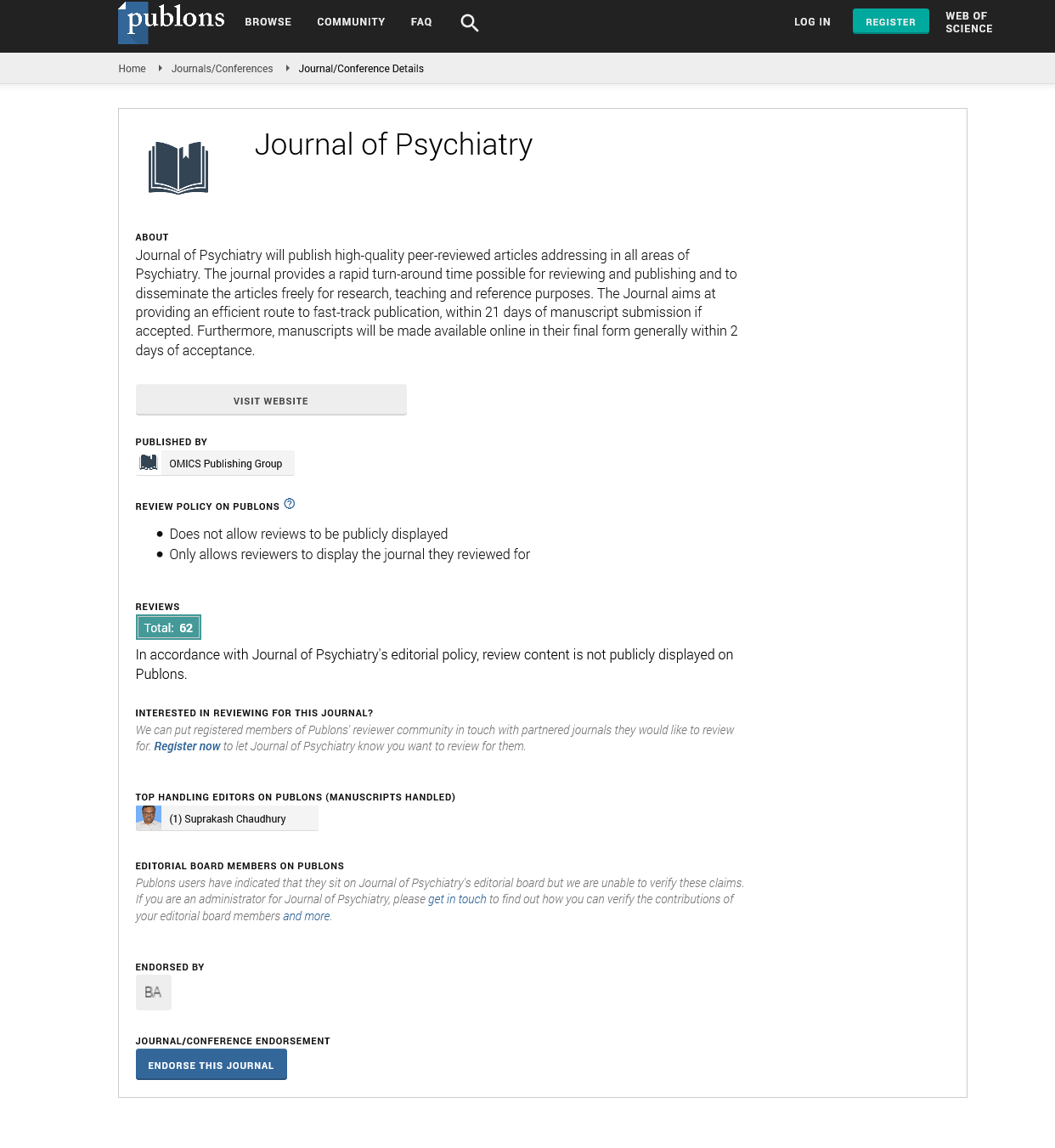Indexed In
- RefSeek
- Hamdard University
- EBSCO A-Z
- OCLC- WorldCat
- SWB online catalog
- Publons
- International committee of medical journals editors (ICMJE)
- Geneva Foundation for Medical Education and Research
Useful Links
Share This Page
Open Access Journals
- Agri and Aquaculture
- Biochemistry
- Bioinformatics & Systems Biology
- Business & Management
- Chemistry
- Clinical Sciences
- Engineering
- Food & Nutrition
- General Science
- Genetics & Molecular Biology
- Immunology & Microbiology
- Medical Sciences
- Neuroscience & Psychology
- Nursing & Health Care
- Pharmaceutical Sciences
Opinion Article - (2025) Volume 28, Issue 1
The Psychology of Misinformation: How False Beliefs Persist and Spread in the Digital Age
Laura Bodeker*Received: 01-Jan-2025, Manuscript No. JOP-25-28584; Editor assigned: 03-Jan-2025, Pre QC No. JOP-25-28584; Reviewed: 17-Jan-2025, QC No. JOP-25-28584; Revised: 23-Jan-2025, Manuscript No. JOP-25-28584; Published: 31-Jan-2025, DOI: 10.35248/2167-0358.25.28.732
Description
Misinformation has become a defining challenge of the digital age, with false beliefs persisting and spreading at an unprecedented scale. The psychology behind misinformation explains why individuals are susceptible to false information, how cognitive biases reinforce these beliefs and why misinformation continues to circulate despite efforts to correct it. The rise of digital platforms and social media has accelerated the dissemination of false narratives, making it easier for misinformation to influence public opinion, decision-making and even policy formation. Understanding the psychological mechanisms that drive misinformation can help develop effective interventions to mitigate its impact.
One of the key psychological factors contributing to the persistence of misinformation is cognitive biases, which shape how people process and interpret information. One such bias is the confirmation bias, where individuals seek out and believe information that aligns with their preexisting beliefs while dismissing contradictory evidence. This tendency reinforces existing worldviews and makes it difficult to correct misinformation, as people are more likely to accept false claims that support their opinions rather than critically evaluating them. Another cognitive bias at play is the illusory truth effect, which suggests that repeated exposure to false information increases its perceived accuracy. The more frequently people encounter a false claim—whether through social media, news outlets, or personal conversations the more likely they are to believe it as true, even if it is factually incorrect.
Social and emotional factors also play a significant role in the spread of misinformation. Misinformation often thrives in emotionally charged contexts, where strong emotions such as fear, anger, or outrage make individuals more likely to share false information without verification. Studies show that misinformation designed to evoke emotional responses spreads more rapidly than factual content because people are motivated to react impulsively rather than critically analyzing the information. Additionally, the role of social identity contributes to the persistence of misinformation, as people tend to trust and accept information shared within their in-group while rejecting contradictory claims from perceived out-groups. This phenomenon, known as motivated reasoning, leads individuals to defend false beliefs when they are closely tied to their identity, making them resistant to factual corrections.
The backfire effect is another psychological phenomenon that explains why misinformation is difficult to correct. When individuals are presented with evidence contradicting their beliefs, they may become even more entrenched in their views rather than changing their minds. This occurs because counterevidence threatens their identity or worldview, prompting a defensive response. Instead of updating their beliefs, individuals selectively interpret the information in a way that reinforces their original stance. This effect is particularly pronounced in political or ideological debates, where misinformation is deeply tied to personal or group identity. The role of digital platforms and algorithms in spreading misinformation cannot be overlooked. Social media platforms use algorithms that prioritize content based on engagement rather than accuracy, meaning that emotionally provocative and sensationalist misinformation is more likely to be amplified. Echo chambers and filter bubbles further contribute to the problem by exposing individuals primarily to information that reinforces their existing beliefs while limiting their exposure to diverse perspectives. The combination of personalized content delivery and cognitive biases creates an environment where misinformation can spread rapidly and persist for long periods.
Efforts to combat misinformation require a multi-faceted approach that addresses both psychological and technological factors. One effective strategy is prebunking, which involves exposing individuals to weakened forms of misinformation before they encounter it in real-world settings. Research suggests that this approach helps individuals develop cognitive resistance to false claims, making them less likely to be influenced by misinformation later. Additionally, promoting media literacy and critical thinking skills can equip individuals with the ability to evaluate information sources, identify manipulation tactics and fact-check claims before sharing them. Encouraging slow thinking, where individuals take time to reflect and verify information before reacting, can reduce the impulsive spread of misinformation.
Fact-checking initiatives play a crucial role in addressing misinformation, but their effectiveness depends on how they are framed. Rather than simply stating that information is false, factcheckers can use narrative storytelling, visual aids and trusted messengers to present corrections in a way that resonates with the audience. Additionally, social media platforms can implement design changes, such as flagging misleading content, limiting the reach of viral misinformation and promoting authoritative sources, to curb the spread of false beliefs. While misinformation will likely remain a persistent challenge, understanding the psychological mechanisms behind its spread and persistence offers valuable insights into developing more effective countermeasures. By addressing cognitive biases, promoting critical thinking and implementing structural changes in digital platforms, societies can work toward minimizing the harmful effects of misinformation in the digital age.
Citation: Bodeker L (2025). The Psychology of Misinformation: How False Beliefs Persist and Spread in the Digital Age. J Psychiatry.28:732.
Copyright: © 2025 Bodeker L. This is an open-access article distributed under the terms of the Creative Commons Attribution License, which permits unrestricted use, distribution and reproduction in any medium, provided the original author and source are credited.

